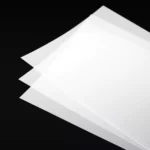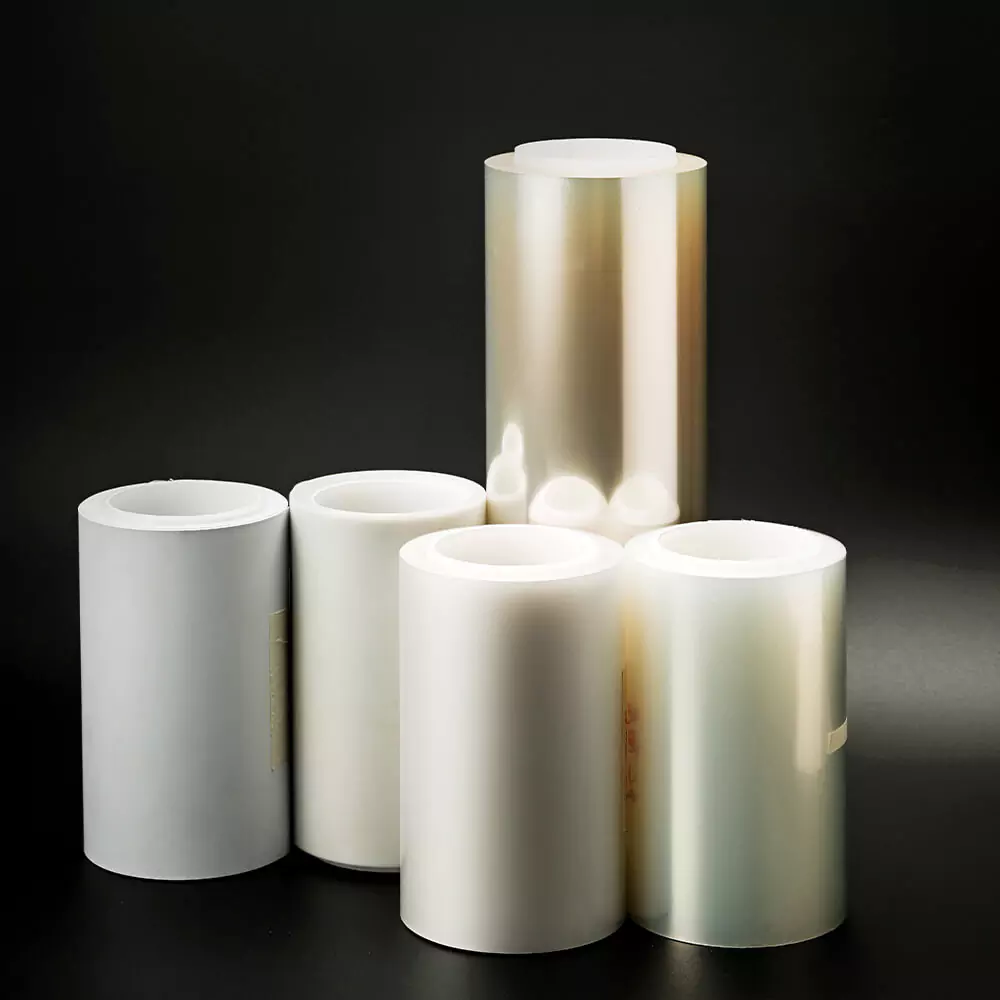
What role does polycarbonate plays in new energy vehicles
How is PET film used in the printing industry?
PET film plays a very important role in secondary processing fields such as printing and paper bags. So how is PET film used in printing?
Material properties
PET film is a plastic film material with medium and low surface energy. Surface pretreatment is required before printing to increase surface removal energy or wetting ability. Otherwise, the ink and ribbon will not be strong enough and will fall off easily.
Basic methods of surface pretreatment
- Corona treatment. Through high-voltage discharge, the surface energy of the material is increased. There are two methods: pre-processing by the supplier when making the material and online processing on the printing press. The surface tension of the treated film is required to be above 38dyn.
- Surface coating. Pre-coat an ink-friendly coating on the surface of the material, such as corona-free PET film surface treatment agent and PET film surface treatment agent, to improve its wetting ability for the ink and increase the firmness of the ink. This processing method is the most ideal, most common and most stable method for PET materials.
Printing method
- Printing lamination method.
Use ordinary offset printing to draw ink, and immediately cover it with matte PET or BOPP film for die-cutting after printing, so there is no problem of ink drying. This type of processing does not have any requirements on the surface properties of the material. PET or BOPP with matte surface can be printed with ribbons.
- Printing glazing method.
Use UV ink, print online on a rotary label machine, and apply UV varnish. The glazing process can use entire glazing or partial glazing, leaving the printing area reserved. This method is also a method commonly used by customers.
- UV printing method. Printed using UV ink. No laminating or glazing is required, the printing area is reserved.
- Printing and drying method. Special oxidative polymerization quick-drying special ink is used. After printing, it is dried in a hot air drying tunnel and finally rewinded.
- Natural drying method. This type of label is usually used for manual labeling, so the processing method is to roll printing and then cutting. After printing, the labels should be put on the shelf to dry naturally after cutting. Similarly, the ink used is a special oxidative polymerization quick-drying special ink.
Quality assurance
- The material surface must be pre-treated and meet the standards.
- When using matching special inks, varnishes and ribbons, they should be tested in advance.
- Control the thickness of the ink layer and dry it thoroughly. Pay attention to the overprinted parts of the ink to prevent the lower ink from drying out.
Die cutting processing
- Use a small-angle die-cutting blade, 42-degree angle is recommended.
- Use hard die-cutting blades made of alloy materials.
- Keep the blade sharp.
- Be careful not to use the die-cutting knife that has cut the paper to die-cut the film material again.
- Use a hard liner and pay attention to the flatness, otherwise die-cutting quality problems may easily occur.
PET packaging films are used to protect products such as food, beverages and pharmaceuticals from contamination. They offer several benefits, including improving product quality, extending shelf life and reducing packaging waste.
PET packaging film is a plastic film used to wrap or cover products. The film consists of several layers, with the outermost layer being made of PET. PET packaging films are beneficial because they are durable, recyclable, and can be printed with images or Text. They are also resistant to moisture and heat, which makes them ideal for food and beverage products.
Packaging film is a PET material that is used on products to protect them from the environment and contamination. The most common application of packaging film is to protect food from spoilage and contamination.
PET packaging film has many advantages over other types of packaging materials. They are non-toxic, which makes them safe for human consumption. They are also waterproof, which means they can protect products in waterproof environments or shipping containers.
The most common type of PET film is called a laminated film. This type of film consists of two layers: an outer layer made of PET and an inner layer made of a plastic liner. The two layers are laminated together through heat and pressure, in the product Form a solid barrier from the environment.
Advantages of PET packaging film:
PET packaging films offer many advantages over traditional packaging methods, making them an increasingly popular choice for products that require secure and tamper-proof storage.
● PET packaging films are more durable than traditional packaging materials. PET films can withstand before failing A lot of punishment, including being scratched, cut, and even soaked in water. This makes it an excellent choice for products that need to be stored in an environment with high humidity or moisture content, like medications or foods that will be exposed to sunlight.
- PET packaging films are also environmentally friendly. They generate virtually no waste when used and can even be recycled multiple times without loss of quality. This is an important consideration for companies looking to reduce their environmental footprint.
- PET packaging film is easy to seal and maintains sealing.
Environmental benefits:
When it comes to environmental benefits, PET packaging films are hard to beat. Not only is it more environmentally friendly than traditional packaging materials, but PET also has many other advantages that make it an ideal choice for products such as food and beverage containers. Here are six of the most notable ones:
● PET is much more environmentally friendly than traditional packaging materials. It is recyclable, which means it can be reused multiple times and reduces overall waste.
● PET does not absorb moisture or release toxins when exposed to air, which makes it desirable Ideal for products that stay fresh and free of contaminants.
● PET does not contain harmful chemicals or heavy metals, so it is a safe choice for products intended for human consumption.
The benefits of PET packaging films are obvious and undeniable. They are lightweight, durable, and easily recyclable. Plus, they have many unique advantages that make them ideal for many products. For example, PET packaging films help Extends the shelf life of your products, keeping them fresh longer. Additionally, they are resistant to moisture and heat, which makes them ideal for products that need to be kept cold or hot.
In fact, PET packaging films arguably offer almost unlimited potential in terms of how they can be used. And because they are so versatile and efficient, there is really no reason not to adopt them as the preferred method of packaging your products.

